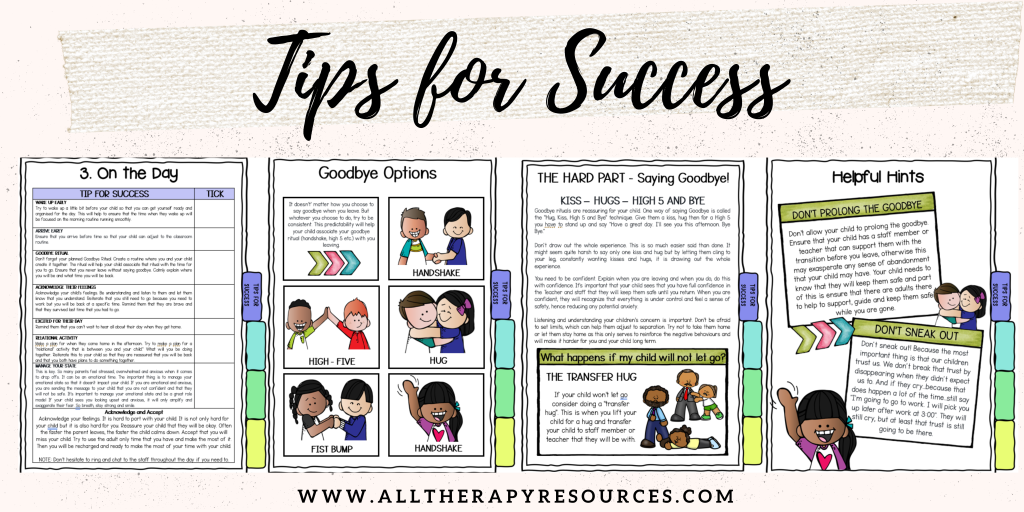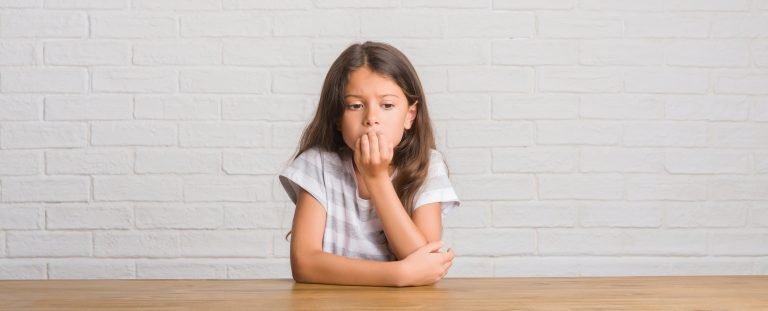Proactive Approaches to Easing Separation Anxiety in Schools

As a behavior practitioner, seasoned counselor and play therapist, I have witnessed the ripple effect of separation anxiety on a child’s school experience. It’s a term we often hear, but understanding its intricate web of emotions and behaviors is key to supporting our young learners.
Separation anxiety is more than just a child clinging to a parent at the school gate; it’s a deep-seated concern that can echo throughout their development and learning journey.

Understanding Separation Anxiety
Separation & Development
When a child steps into school, they’re not just leaving a place—they’re stepping away from their primary source of comfort. It’s essential to remember that this separation anxiety is a normal, healthy sign of their bond and their development. It’s a signpost of their maturing understanding of relationships, though it can make our school hallways a tableau of distress.
Object Permanence
As school counselors, we’re well-versed in the stages of cognitive development, such as object permanence—the understanding that objects continue to exist, even when unseen. Our task is to help children apply this to people, reassuring them that their caregivers will return. Weaving this into our conversations and utilizing visual aids can help solidify this concept for our young learners.
Leave and Return
Predictable patterns of leave and return fortify a child’s sense of security. They learn that separations are not permanent and that their feelings of safety don’t need to leave with their caregivers. This reassurance is a cornerstone of our practice, as vital as any learning objective on the curriculum.
The Good News…
There’s a silver lining to the cloud of separation anxiety: it’s evidence of a strong bond and a platform for developing autonomy. Celebrate the small victories with your students—each day they cope a little better is a triumph.
What Separation Anxiety Looks like?
As the observant eyes in the corridor, we must be adept at recognizing separation anxiety’s many faces. From the child who clings to a parent’s leg to the one who quietly withdraws, our interventions need to be as varied as the symptoms we witness.

Attachment & Development
Attachment Theory
The roots of how children relate to their surroundings lie in attachment theory. A secure attachment can make the difference between a child who views school as an adventure and one who sees it as a series of traumatic partings.
Secure & Insecure Attachment
Identifying whether a child has a secure or insecure attachment style can inform our approach to their care. Our schools should be bastions of security, where insecurely attached children can find new foundations of trust.
Why Does Attachment matter?
The significance of attachment can’t be overstated. It’s linked to everything from the way children interact with peers to their coping mechanisms in stressful situations. We play a role in reinforcing these attachment bonds, providing consistency and care that resonates beyond the school walls.
Characteristics of Temperament
Each child’s response to separation is as unique as their temperament. Some may stride into school with hardly a backward glance, while others may falter. Our support plans must be personalized, recognizing the spectrum of temperament and individualizing our empathetic responses.
Simultaneous Feelings
It’s natural for children to experience a tangle of emotions at separation. They might be excited about school activities but anxious about leaving their caregiver. Validating these simultaneous feelings is part of our supportive dialogue, teaching children that it’s okay to feel many things at once.

Tips for Success
PEP TALK – Prioritize Building a Strong Connection
A motivational pep talk might be what a child needs to brave the day. It’s also a reminder for us to build strong, positive connections with our students, providing them with a sense of belonging and comfort within the school environment.
The Triad – Preparation, Brisk Transition & Time
A prepared child is a secure child. Our guidance can help parents and teachers to keep goodbyes brisk, reducing anxiety. Time, too, is a healer, and children often adapt to routines when given the necessary space and support.
Tips for Success Checklists
A checklist can be a visual anchor for a child in a sea of anxiety, guiding them through school transitions. When a child ticks off each step, they’re not just following a routine—they’re charting their course through anxiety.
The Hard Part – Separating and Saying “Goodbye”
We know the sting of a hard goodbye. As counselors, we teach and model quick, reassuring goodbyes that affirm safety and love. A child’s resilience often begins with a well-handled farewell.

Routines & Schedules
Why are Routines & Schedules Important?
Routines are the backbone of predictability in a child’s life, especially for those grappling with separation anxiety. These routines become the thread that weaves through their day, giving them the structure and predictability they crave.
Creating Predictable Routines
We can design school routines that become a comforting rhythm for anxious students. From the first bell to the final wave goodbye, each step is a familiar friend.
My Morning Routine
Morning routines are sacred. They set the tempo for the day. A robust morning routine chart can be a map to calm waters for a child navigating the stormy seas of separation anxiety.
My Night Time Routine
Similarly, a night-time routine chart is a beacon for a restful evening. It signals to the child that the day has a structure and that their feelings of safety and comfort will be there, waiting for them in the morning.

Emotions & Coping Tools
Feeling & Body Connections
Our role involves teaching children to connect their feelings with body sensations, empowering them to communicate their anxiety and seek help.
Feelings
Emotions are complex and diverse. By recognizing and validating children’s feelings, we open the door for them to share and manage these emotions.
Body Sensations
Teaching children to recognize and articulate the physical sensations associated with their feelings helps demystify their experiences of anxiety.
Coping Strategy Cards
Coping strategy cards are more than just pieces of paper; they’re a tangible set of reminders that children have the tools to face their fears.
Balloon Breathing & Other Breath Strategies
Breathing techniques like balloon breathing are practical and easily accessible tools that can bring immediate relief in moments of anxiety.
Coping Affirmations
Coping affirmations are the gentle whispers of strength that we can instill in our students, affirming their ability to weather the separation and embrace the school day.

As we thread our way through the complex fabric of separation anxiety, let’s remember that our role is as much about educating as it is about empathizing, about guiding as much as understanding. With every strategy, checklist, and routine we introduce, we pave a smoother path for our students, one where goodbyes become a little less daunting, and hellos a little more joyful.
If you have found this information helpful and would like a deeper dive into these key aspects that impact and influence Separation Anxiety, then you will find All Therapy Resources “Separation Anxiety” Portfolio a valuable and comprehensive resource for your toolkit. Everything from handouts, checklists, routines and much more is included.
Frequently Asked Questions about Separation Anxiety
Q1: What is separation anxiety, and why is it significant in a school setting? Separation anxiety refers to the fear and distress children often feel when parting from their primary caregivers. In schools, it’s significant because it can impact a child’s ability to engage in learning, socialize with peers, and participate in school activities. Addressing it is crucial for fostering a supportive learning environment.
Q2: How can I, as a school counselor, recognize signs of separation anxiety in students? Look for symptoms such as excessive worry about losing a caregiver, reluctance to go to school, physical complaints, and difficulty concentrating. Emotional distress during drop-offs or reunions can also be indicative of separation anxiety.
Q3: At what age is separation anxiety most prevalent among children? Although it can vary, separation anxiety is most commonly observed in children aged between 18 months and three years. However, school-age children can also experience separation anxiety, particularly during transitions or stressful periods.
Q4: Can separation anxiety impact a child’s academic performance and how? Yes, separation anxiety can affect a child’s academic performance by causing distractions, reducing their ability to concentrate, and leading to school avoidance behaviors, all of which can hinder learning and academic achievement.
Q5: What strategies can schools implement to support children with separation anxiety? Schools can establish predictable routines, create a welcoming environment, involve parents in the transition process, and provide social-emotional learning activities. Additionally, using resources like the Separation Anxiety Portfolio helps tailor interventions to each child’s unique and individual needs.
Q6: How does building strong teacher-student relationships help alleviate separation anxiety? Strong teacher-student relationships offer a sense of security and trust, making the school environment feel safe and nurturing. This emotional support can significantly reduce a child’s anxiety about being away from their caregivers.
Q7: What role can parents play in helping their child cope with separation anxiety? Parents can play a supportive role by maintaining a positive and consistent goodbye routine, reinforcing the temporary nature of the separation, and collaborating with school counselors to ensure continuity of care and strategies.
Q8: Are there specific interventions for children with special needs who experience separation anxiety? Yes, interventions may need to be customized for children with special needs. Visual schedules, social stories like the ‘I’m Going to School’ social narrative, and clear communication tailored to the child’s developmental level can be particularly effective.
Q9: Can separation anxiety be prevented, and what proactive measures can be taken? While not all cases can be prevented, proactive measures like gradually acclimating a child to the school environment, practicing brief separations, and reinforcing positive social interactions can minimize the risk and severity of separation anxiety.
Q10: When should a school counselor seek additional support for a student with separation anxiety? If a child’s separation anxiety persists despite school-based interventions and begins to significantly disrupt their daily functioning, it may be time to seek additional support from mental health professionals specializing in childhood anxiety disorders.














